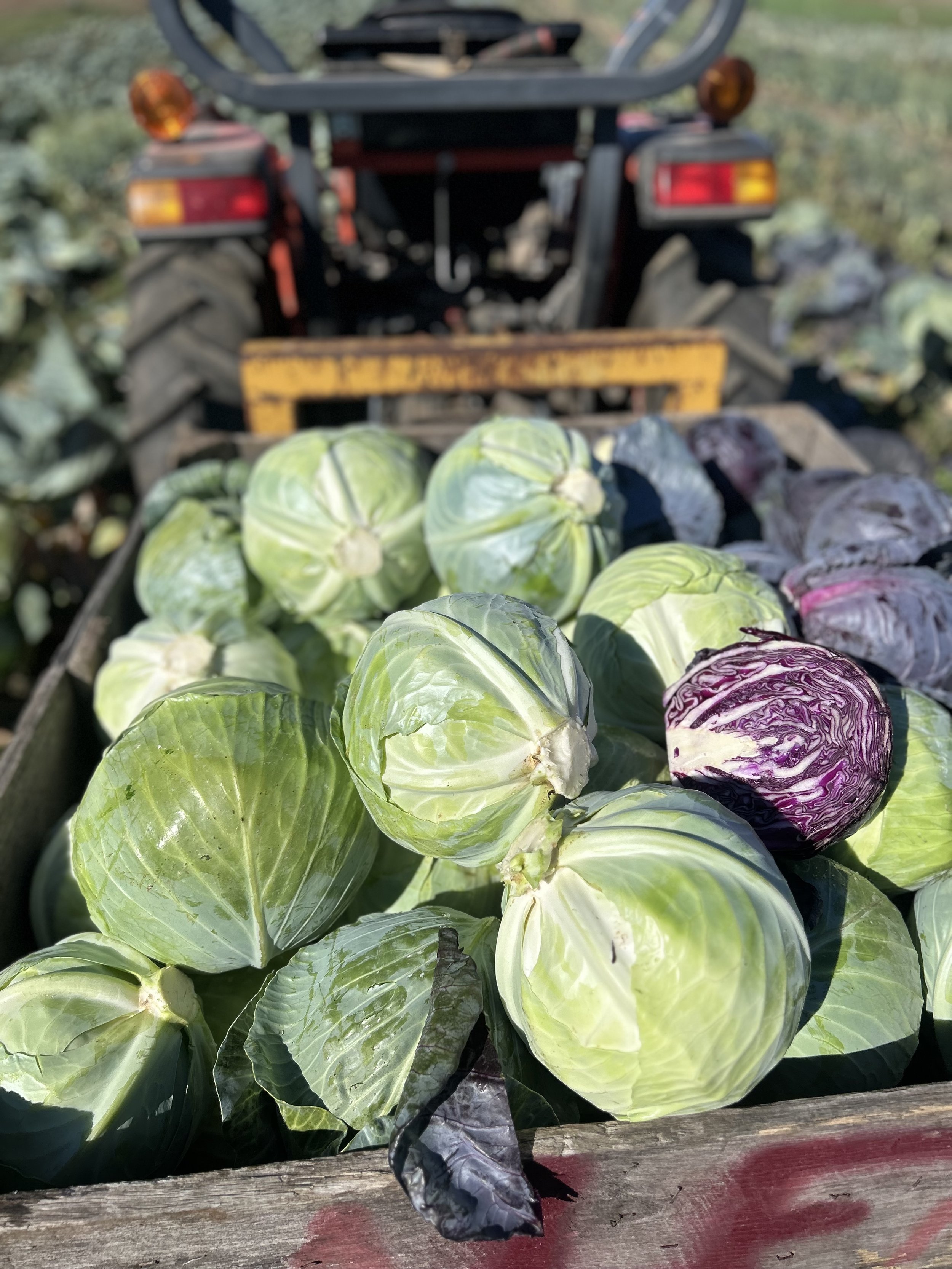A Beginner’s Guide to
Sauerkraut
Making your own sauerkraut is like making your own medicine. This superfood is packed with immune boosting vitamins and probiotics to improve your gut health. We are simply fermenting cabbage but it is a gateway to better health. Using our cabbages means you know you are getting a direct link to our farm soil, a direct link to the earth to nourish your body. Simple ingredients from the Earth and time are the special ingredients for this sauerkraut.
Homemade Sauerkraut
Ingredients:
1–2 heads of cabbage, about 2 pounds (1000 grams)
Mineral or sea salt (not iodized)- ( 20 grams based on 1000 grams of cabbage). Or multiply .02 x the grams of cabbage, see notes)
Equipment:
1-2 mason jars for small batches or for larger batches we recommend this crock
sharp knife or mandolin
Large Bowl
Kitchen Scale
Set aside 2 cabbage leaves and leave them whole.
Shred cabbage finely with a sharp knife or mandolin . Weigh the cabbage in grams (do not include bowl’s weight). Take the weight of the cabbage and multiply it by .02. This is the number in grams of salt you will need, now weigh out the salt.
Massage the measured salt into the cabbage. (Let sit until there is lots of liquid from the cabbage).
Transfer cabbage and liquid to your jar or crock and pack tightly with your muddler.
Leave a few inches of space between liquid level and the top of the jar. Top with one or two cabbage leaves to keep shreds from floating above the liquid add your weight.
Keep the jars at room temperature (65-72F is ideal). Check progress daily making sure cabbage is still submerged ( pushing it down if not) and taste for doneness starting day 3. It will generally take anywhere from 3-5 days and will get sourer as it ferments. A larger batch in the large crock can take up to 21 days (or longer depending on the size of the batch).
You will know that it is adequately fermented when it looks lighter in color, with a pleasantly tangy flavor.
Store in the refrigerator with a sealed lid.
NOTES
Salt Ratio: The recommended salinity for Sauerkraut is 1.5% – to 2.5% salt to the weight of the cabbage. Here we use 2% salt to the weight of the cabbage. Example: 1ooo grams cabbage multiplied x .02= 2o grams of salt. Feel free to use more or less as long as it stays between 1.5% and 2.5%. I use Himalayan Sea Salt and Real Salt. Both are natural and unrefined with high mineral content.
How to store: Cold temperatures (refrigerate!) slow down the fermentation process. Make sure you store your kraut in its liquid, and it will keep for at least 6 months.

